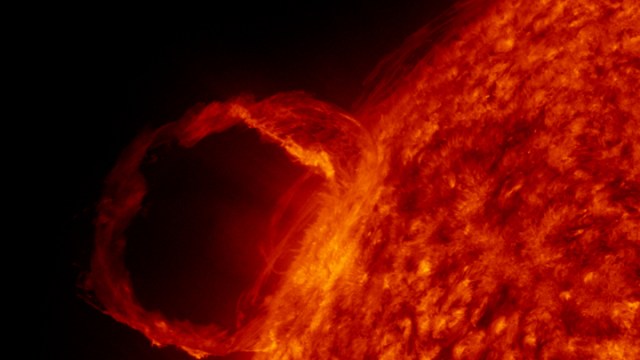How would our Universe be different without dark energy?
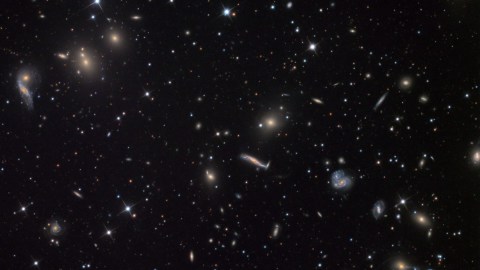
In 1998, cosmologists got the surprise of a lifetime. Here’s how our Universe would’ve looked without cosmic acceleration.
“We’ve known for a long time that the universe is expanding. But about 15 years ago, my colleagues and I discovered that it is expanding faster and faster. That is, the universe is accelerating, and that was not expected, but it is now attributed to this mysterious stuff called dark energy which seems to make up about 70 percent of the universe.” –Adam Riess
In 1998, two independent groups of scientists both studying the most distant supernova explosions in the Universe reported the same unexpected phenomenon: these brilliant flashes of light, whose intrinsic brightnesses and redshifts were known to great precision, all had a problem, that they appeared to be much fainter than expected. And the higher of a redshift you went to, the greater this problem got. The interpretation? They were more distant — and hence appeared less bright — than the conventional version of the expanding Universe would have predicted. Rather than being filled only with matter and radiation throughout the fabric of space, the Universe also contained this small but important amount of energy inherent to space itself: dark energy.

As our measurements got better and better, and as we accumulated data from other sources as well, like the fluctuations in the Cosmic Microwave Background (CMB) and the clustering properties of large-scale structure, we found out that approximately 68% of the energy in the Universe today was this mysterious dark energy. Yes, there was dark matter, normal matter, neutrinos and radiation all present, and they were all vital to how the Universe expanded and evolved, particularly at early times. But as the Universe aged, dark energy became more and more important, and will eventually approach a full 100% of the energy present within our Universe.
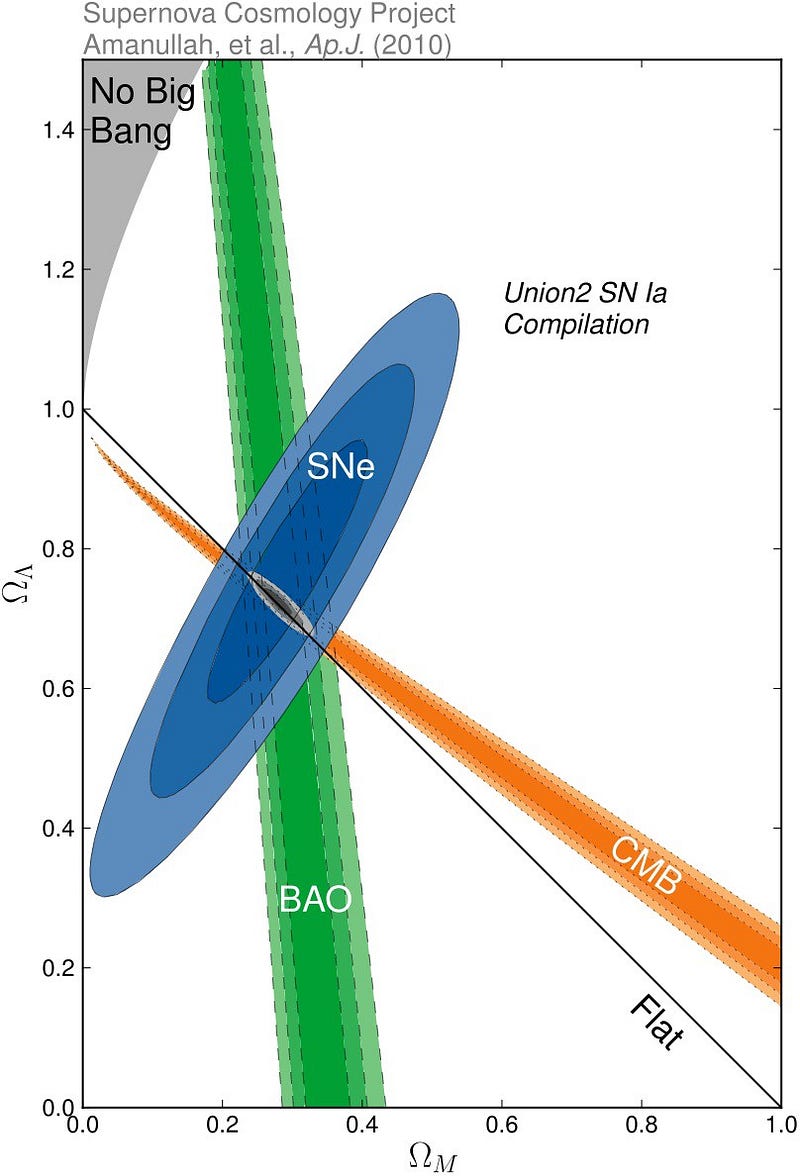
But according to General Relativity, it didn’t have to be this way at all. We could have had a Universe with no dark energy at all: where zero-point energy of empty space was actually zero, instead of some tiny, non-zero value. If that were our Universe, how would it be different from the Universe we have today? Surprisingly, there are a few significant ways that really make an impact.
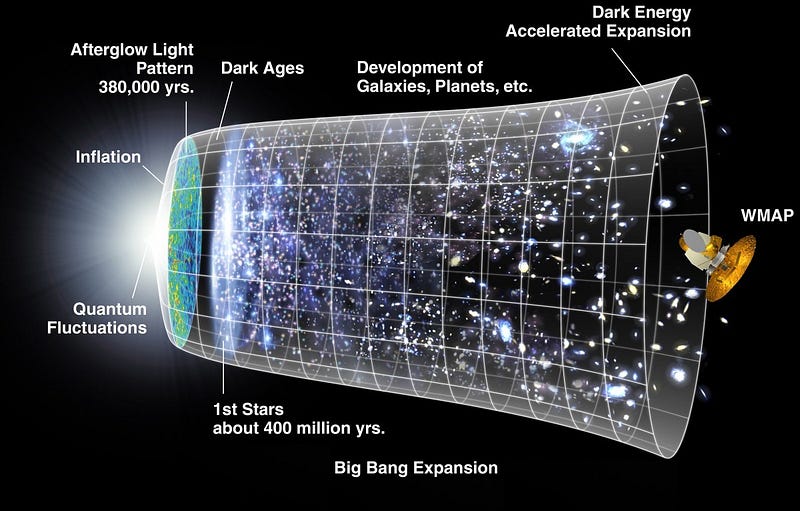
1.) The Universe would be a little bit different. Right now, in our 13.8 billion year old Universe, 32% of the energy density is in the form of matter, 68% is dark energy, the expansion rate is 67 km/s/Mpc and the limits of our observable reach is 46.1 billion light years. If wanted the Universe to have the same exact amount of matter in it, but with no dark energy, our Universe would have expanded faster early on, and would be expanding slower today. It would:
- be 47.7 billion light years in size, rather than 46.1 billion,
- have a current Hubble rate of 56 km/s/Mpc rather than 67 km/s/Mpc,
- the CMB temperature would be just slightly lower, at 2.62 K instead of 2.73 K,
- and have a whopping 71% less energy overall, due to the total lack of dark energy.
But the major differences would show up far in the future, especially when we considered our eventual fates.
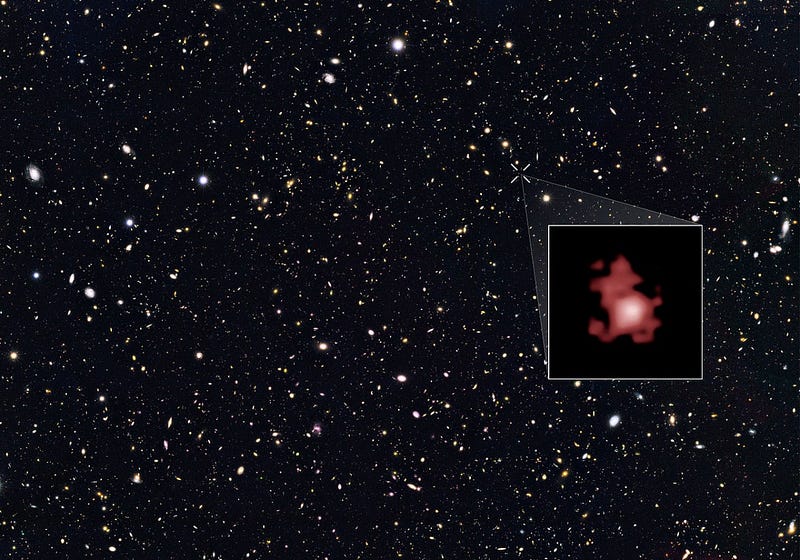
2.) Every galaxy in the visible Universe would still be reachable. In our dark-energy dominated Universe, the rate a distant galaxy recedes from us increases as time goes on. Galaxies presently more than 15 billion light years away are receding faster than the speed of light, and so nothing leaving Earth today — not a relativistic spaceship, not a deep-space probe, not even light itself — could ever reach it. Already, 97% of the galaxies in our Universe are forever beyond our reach. But if we were to take that dark energy away, everything would be reachable eventually, even if it took tens or hundreds of billions of years. We’d get there in the end.
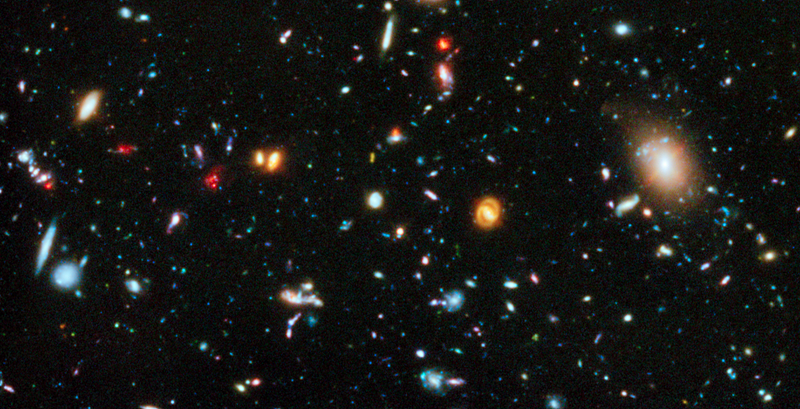
3.) New galaxies beyond our horizon would continually become accessible. Not only that, but even galaxies whose light has never reached us yet will someday have that light catch up to us in the future! While a dark energy Universe has the currently visible galaxies “red out,” or redshift away to the point where they’ll no longer be seen in the far future, a Universe without it would’ve seen additional galaxies become visible over time, with more and more becoming apparent (and reachable) as time goes on.
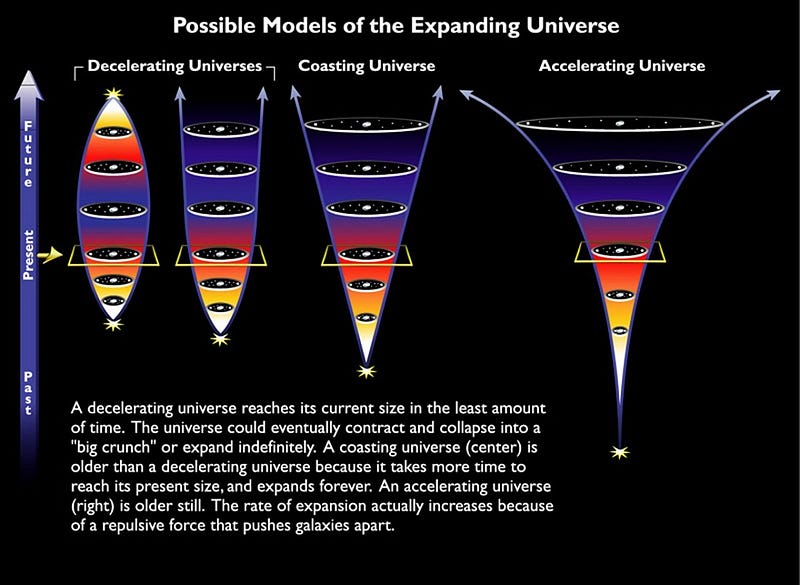
4.) The Hubble rate of expansion would eventually drop to zero. It would never actually reach zero, mind you, and it would never turn around and recollapse: there’s too little energy for that overall. But the Hubble rate would asymptotically approach zero as the Universe continued to expand, meaning that if an infinite amount of time were to pass, an infinite number of galaxies (though not all of them, by any means) would become accessible. With dark energy, our Universe’s Hubble rate will asymptote to a finite, significant value after an infinite amount of time: something like 46 km/s/Mpc. Without dark energy, we’d have dropped below that 46 km/s/Mpc rate after another 4.3 billion years.
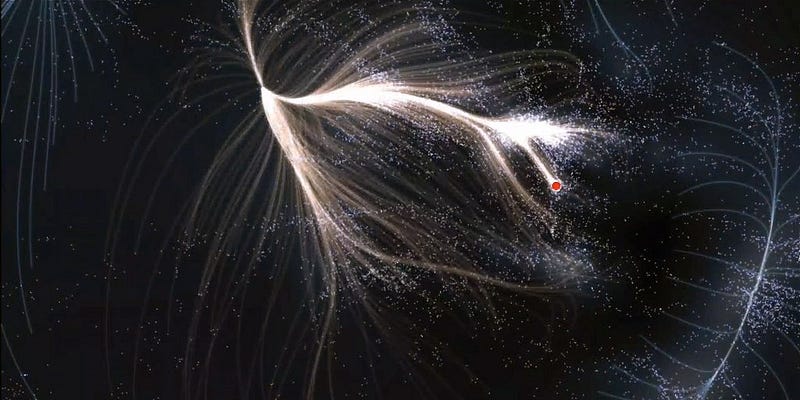
5.) Superclusters would really exist. Our local supercluster, containing the local group, the Virgo Cluster (the largest supercluster member) and hundreds of other individual galaxies, groups and clusters, doesn’t really exist thanks to dark energy. It looks like a large structure, but it’s not bound together and will have all of its individual components strewn apart as time goes on. But without that additional repulsion that dark energy imparts, gravitation would win in the end. On long enough timescales, all galaxies, groups and clusters that make up the Laniakea supercluster will remain bound together, and will continue to experience mergers on cosmic scales.
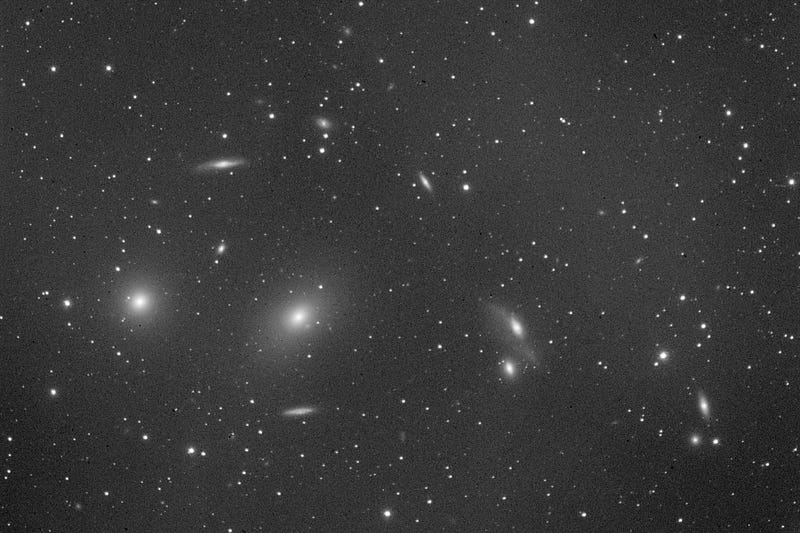
6.) Which means eventually, Milkdromeda would fall into the Virgo Cluster. At 50–60 million light years distant, the Virgo Cluster contains around 1000 galaxies, and is the closest galaxy cluster to our local group. It’s currently receding from us, due to the expansion of the Universe, at over 1000 km/s, or about 100 times faster than any human-made spacecraft has ever traveled. With dark energy, Virgo will only accelerate away from us faster and faster. But if it weren’t there, the gravitational pull of Virgo would be irresistible, and even though it would take around a hundred billion years — many times the age of the Universe at present — eventually the galactic wreckage of our local group would merge with the Virgo cluster as well.
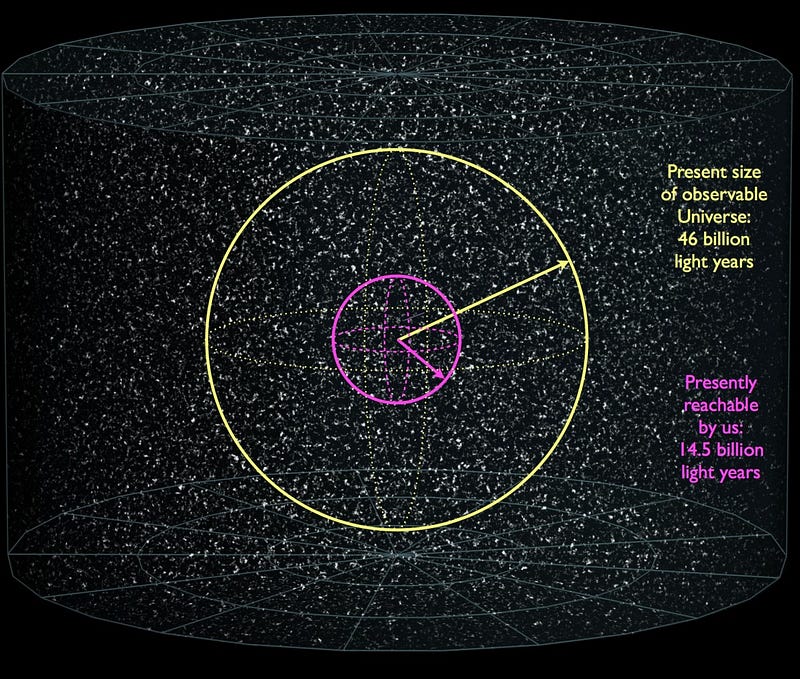
With dark energy, the subtle differences of a slightly more energetic and more rapidly expanding Universe today leads to a far future where our local group is lonely and isolated, distant galaxies disappear from view and there’s no such thing as a bound, cosmic supercluster. On the largest scales, the Universe is doomed to emptiness, and it’s extra energy intrinsic to space itself that’s to blame. Part of why it was so hard to accept is because the fate of a dark energy Universe is so different — and unpalatable — from a Universe without it. Yet science doesn’t care about your personal preferences or motivations: it cares about the Universe as it actually is. The best thing we can do is listen to the story it tells us about itself, and in a way, about ourselves, too.
This post first appeared at Forbes, and is brought to you ad-free by our Patreon supporters. Comment on our forum, & buy our first book: Beyond The Galaxy!





